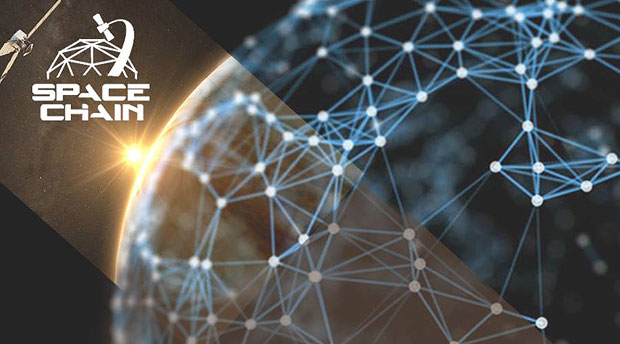SpaceChain on Monday announced that it has entered a partnership with theArch Mission Foundation to use open source technology to launch an ambitious project involving the storage of large data sets in spacecraft and on other planets.
Arch Mission will load large quantities of data onto SpaceChain's satellite vehicles with the eventual aim of storing data on other planets.
"The goal of archiving and preserving knowledge of future generations will advance archiving science and human knowledge by itself," SpaceChain cofounder Zheng Zuo said. "The ambitious goal of disseminating this knowledge throughout the solar system is finally achievable today, thanks to greatly reduced launch costs through new space launch providers."
SpaceChain's decision to support the Arch mission to archive human data in space will help launch the Earth Library -- a ring of backup data orbiting around the Earth -- said Nova Spivack, cofounder of the Arch Mission Foundation.
The goal of the foundation is to "preserve and disseminate humanity's most important information across time and space, for the benefit of future generations," he told LinuxInsider.
Data Preservation
Among the data sets that are included are Wikipedia, the human genome, Project Gutenberg, the Internet Archive and the Rosetta Project, Spivack said. The project ultimately will include a vast library of books, music, photos, film, video and other data sets.
The partnership would allow SpaceChain's long-term goal of storing data archives throughout the solar system come to fruition.
The venture follows an earlier partnership involving Elon Musk's Space X, which launched its Falcon Heavy rocket into space last month. Among other things, the launch carried a cherry red Tesla Roadster into space. The car is expected to circumnavigate the sun for at least 30 million years.
The Arch Mission included its first library, including the Isaac Asimov Foundation Trilogy, in that Falcon Heavy payload. There are plans to include additional libraries on future space flights, including a Lunar Library scheduled for delivery to the moon by 2020, and a Mars Library that is designed to accompany the first human settlers to the red planet.
SpaceChain, which was co-founded by CTO Jeff Garzik, a pioneer in the blockchain field and a key Linux kernel engineer, recently entered a critical venture with Qtum Foundation, in order to launch the world's first blockchain node in space.
Qtum launched a CubeSat into space that uses its blockchain technology on a Raspberry Pi.
"Blockchain is an interesting technology as a foundational infrastructure for future space colonies," said Aditya Kaul, research director at Tractica.
"Beyond the secure storage of data, I am personally very excited about how these could come together to create decentralized economies and possibly even governing mechanisms," he told LinuxInsider.
"There is an interesting conference on some of these themes coming up in June in London," Kaul noted.
Race to Space
The efforts to put a decentralized ledger into space follow an earlier effort involving nanosatellite firm Vector and blockchain firm Nexus to develop a cryptocurrency that is hosted in space, noted Jessica Groopman, industry analyst at Kaleido Insights.
Blockstream last year announced plans to launch Blockstream Satellite, a venture to enable satellites to broadcast real-time bitcoin data down to Earth from space, she told LinuxInsider.
"The general push 'to the outer limit' is one driven by intense distrust not only in existing centralized structures, but in the potential for the blockchain market itself to float too far in that direction, as more and more of the world's largest institutions are investing in the technology," Groopman pointed out.
In the early days of the sharing economy, that same sensibility existed in the peer-to-peer community, she recalled, but firms like Uber and Airbnb eventually became dominant.
Source : technewsworld



















